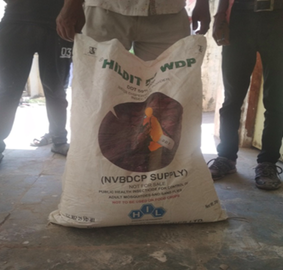Documenting DDT Spraying, Pollution and Alternatives in India

Dichlorodiphenyltrichloroethane (DDT) is an organo-chlorine that was synthesized in 1874, but its insecticidal properties were discovered in 1939. DDT was first used during World War II to combat malaria and typhus among civilians and troops. Subsequently it was used as an agricultural and household pesticide. DDT is currently listed in Annex B of the Stockholm Convention, with its production and/or use restricted for disease vector control purposes in accordance with related World Health Organization (WHO) recommendations and guidelines. Under the Convention, it is allowed to be used for vector control as per WHO’s guidelines only by certain countries. India is one such country, and it reports that it is using DDT for prevention of vector borne diseases such as malaria, dengue and Kala-azar due to lack of suitable alternatives. It has an exemption for DDT use in vector control until 2022. The country also exports DDT to countries that have also taken the exemption to use it for vector control.
Society for Sustainable Development in India conducted a study in the year 2019 to understand the extent of DDT usage for vector control and to identify its diversion to agriculture.
The team interviewed about 100 farmers in two districts (Karauli and Sawaimadhopur) in Rajasthan to understand the agricultural usage of DDT. Along with the survey, the team also organized four community discussion groups in the areas.
This project relates to Sustainable Development Goals 2, 3, 6, 8, 12, 13, 14 and 15
Special thanks to IPEN's South Asia Regional Coordinator Tripti Arora and Regional Hub Toxics Link for their important contributions to the development and finalization of the project.
| Attachment | Size |
|---|---|
| 398.35 KB |
